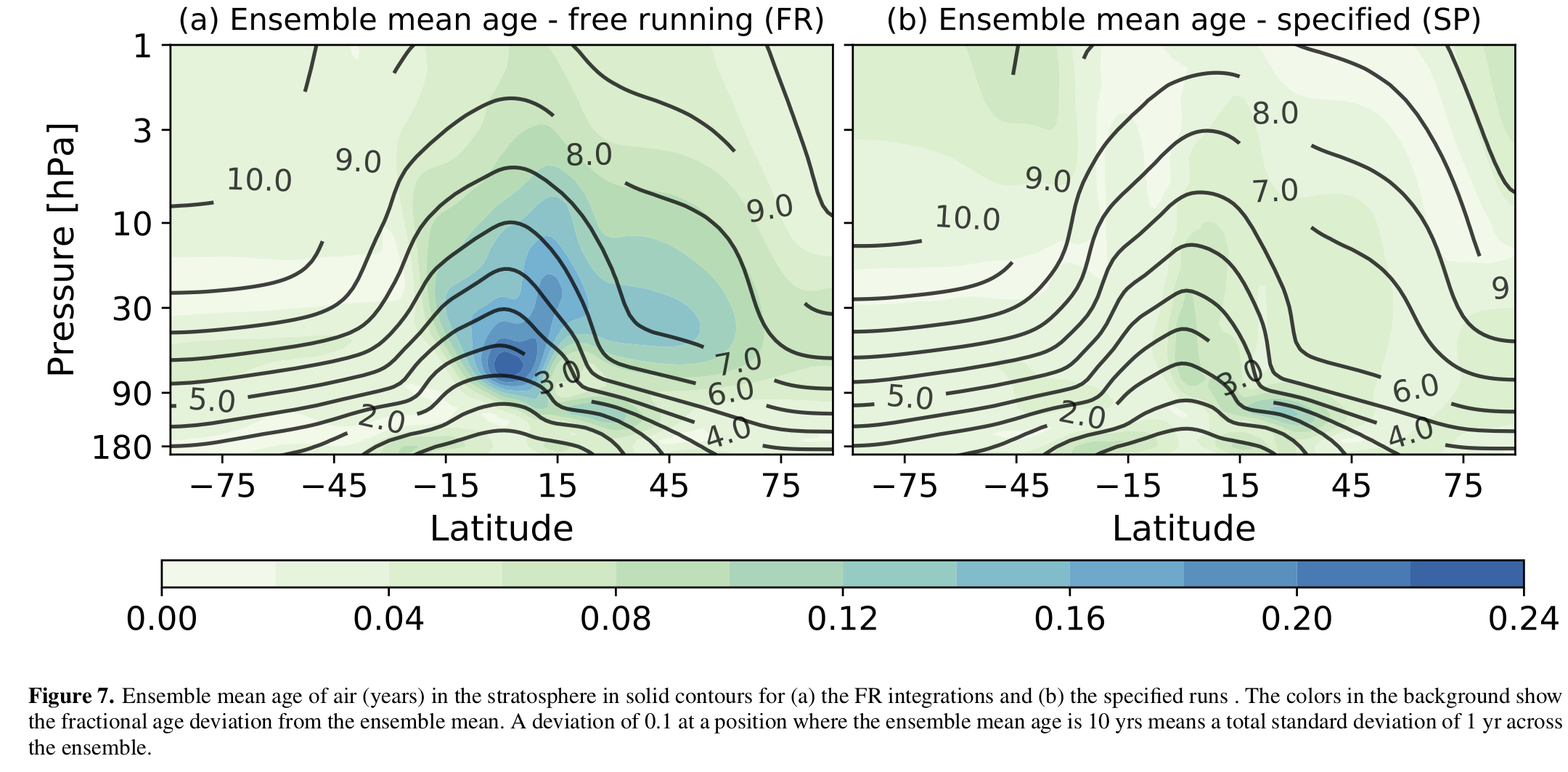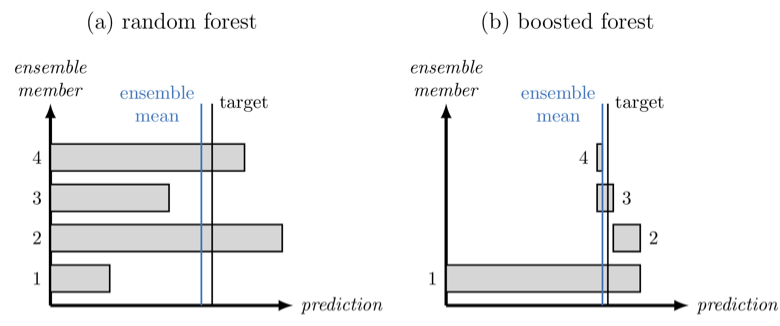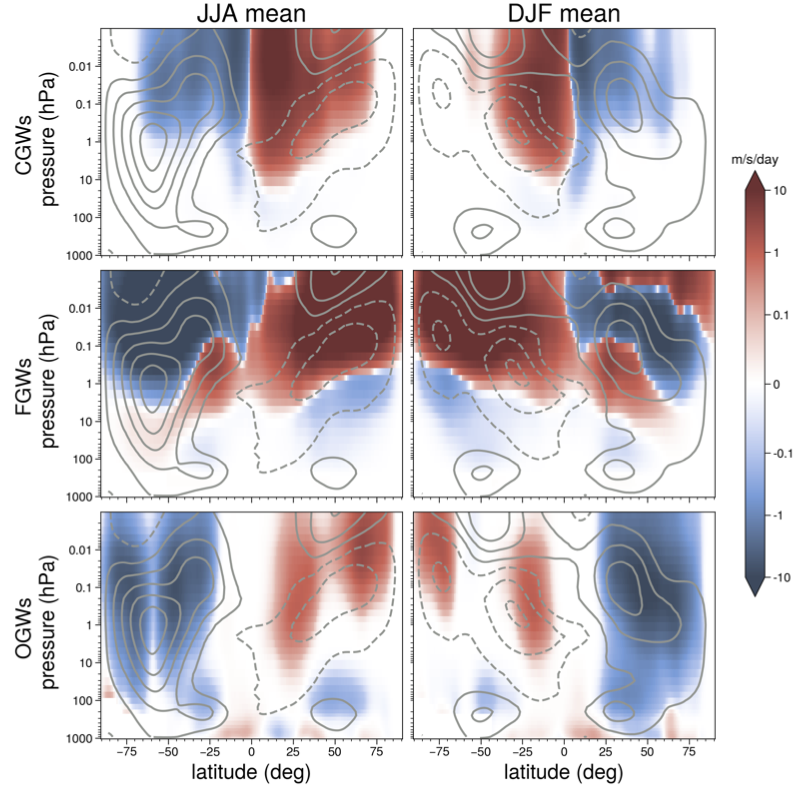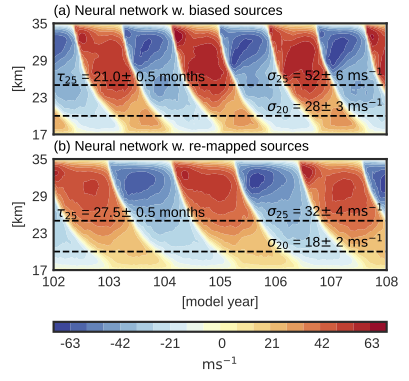How does the numerical formulation of an atmospheric model affect trace gas transport?
Published:
Please see our new paper exploring the role of model numerics on trace gas transport, just submitted to the Quarterly Journal of the Royal Meteorological Society.

This study, lead by Aman Gupta, develops new tests, or recipes, to assess the impact of model numerics on the coupled stratosphere-troposphere system. The transport of trace gases by the atmospheric circulation – in particular, radiatively active species such as water vapor and ozone, and their chemical precursors – plays an important role in the climate system and its response to external forcing. Transport presents a challenge for Atmospheric General Circulation Models (AGCMs), where errors in both the resolved circulation and the numerical representation of trace gases can bias transport.
We develope two benchmark tests to assess transport by the “dynamical core” of an AGCM. A dynamical core is is the numerical model which integrates the equations of motion, forming the “core” of a AGCM, which couples all the “physics” of the atmosphere to the dynamics. To separate transport from chemistry, the tests focus on the “age-of-air”, an estimate of the mean transport time by the circulation. The overturning circulation of the stratosphere, or Brewer-Dobson Circulation, provides a stiff test of model numerics, as the transport time scales are on the order of months to years. Small errors in the numerical representation of trace gases have plenty of time to add up into large biases.
To establish a benchmark, four dynamical cores employing different numerical schemes (finite-volume, pseudo- spectral, and spectral-element) and discretizations (cubed sphere vs. latitude-longitude) are compared across a range of resolutions. We found that the subtle momentum balance of the tropical stratosphere is very sensitive to model numerics, and the first intercomparison reveals stark differences in climatological circulation, particularly at high vertical resolution; some cores develop westerly jets and others, easterly jets. This leads to substantial spread in transport, biasing the age-of-air by up to 25% relative to its climatological mean, making it difficult to assess the impact of the numerical representation of trace gases on transport.
This uncertainty is removed by constraining the tropical winds in the second intercomparison test, akin to specifying the Quasi-Biennial Oscillation in an AGCM. The dynamical cores exhibit qualitative agreement on the structure of atmospheric transport in the second test, with evidence of convergence as the horizontal and vertical resolution is increased. Significant quantitative differences remain, however, particularly between models employing spectral vs. finite-volume numerics, even in state-of-the-art cores.




